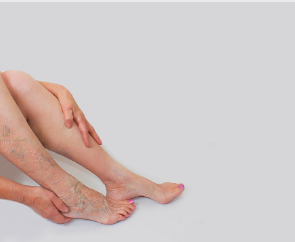Varicose Vein Removal
Varicose vein removal surgery can be a very successful treatment for many patients. The process is usually simple and safe. Once the procedure is complete, patients are placed in the recovery room until they are awake and fully alert. They may experience a sore throat after surgery, but this is usually only temporary. It is important to let your care team know if you are uncomfortable. If you recover well, you can return home the same day. Otherwise, you may need a day or two in the hospital. Afterwards, you will wear compression stockings to keep your varicose veins healthy.
 Cost of varicose vein removal
Cost of varicose vein removal
The varicose vein removal cost varies depending on the procedure performed. Many insurance plans cover the procedure for a certain percentage of the total fee. However, you should check with your insurance carrier before performing the procedure. Some insurers do not cover the procedure or may only cover it if you have an out-of-network provider.
Odyssey-Vein-Clinic varicose vein removal Adelaide cost depends on the type and number of affected veins. The more veins you have, the more expensive the treatment will be. Other factors that may affect the cost include the level of medical care and the cost of materials. The procedure can also be more affordable if done via vein ablation instead of surgical ligation. In addition, vein ablation can be done as an outpatient procedure and does not require general anesthesia or a hospital stay.
Varicose vein removal surgery can cost upwards. This non-invasive procedure is not recommended for severe cases of varicose veins. Most patients require several sessions of the procedure to achieve the desired results. However, this procedure is very effective for mild to moderate cases of varicose veins and can be performed in a short period.
Complications of varicose vein removal
Varicose veins are a common health problem. Some surveys suggest that 40% of men and 32% of women suffer from them. The majority of varicose vein removal procedures take place under general anaesthesia. Varicose vein surgery is usually performed by a surgeon specialising in this area. During a consultation, patients are made aware of the risks and possible complications of the procedure.
Sclerotherapy is an effective treatment for varicose veins. The Odyssey-Vein-Clinic varicose vein removal Adelaide procedure involves injecting a sclerosing solution into the affected vein. The sclerosing action of the solution causes the vein to scar and forces blood to reroute through healthier veins. Eventually, the collapsed vein is reabsorbed into local tissue. The results are typically noticeable in as little as a few weeks. However, more than one session may be required for optimal results. In addition, patients should avoid sclerotherapy if they are pregnant or breastfeeding. Fortunately, there are few major complications with this procedure.
Depending on the severity of varicose veins, surgery may be necessary to remove them. This surgery is only recommended for patients who have not responded to nonsurgical treatments. Other less invasive treatments include endovenous laser treatment and endovenous radiofrequency ablation. Surface laser treatment is another noninvasive treatment that can be effective for the treatment of varicose veins.
Complications of varicose vein surgery can include infection, scarring, and blood clots. Surgical procedures are also riskier, and patients are advised to follow post-operative instructions to minimise risk carefully. Choosing a doctor with specialised training and experience in this type of surgery.
Procedures used to treat varicose veins.
There are several different procedures available to treat varicose veins. Noninvasive procedures are typically performed in a doctor’s office. The patient is awake during the procedure. In some cases, a local anesthetic is used. Before the procedure, the patient should disclose any medications or allergies. They should also stop taking blood thinners since the procedure can cause blood clotting.
Laser treatment is another common treatment for varicose veins. This procedure uses high-intensity light to seal off the vein. The laser doesn’t need anesthesia and is ideal for small varicose veins. Radiofrequency laser therapy is another option for large varicose veins. This treatment is less invasive than surgery but equally effective.
Laser treatment is another popular procedure for large varicosities. It is usually reserved for large varicosities and veins that don’t respond to standard sclerotherapy. The laser can make a large varicose vein appear smaller. Laser treatment does not require anesthesia and is an outpatient procedure.


